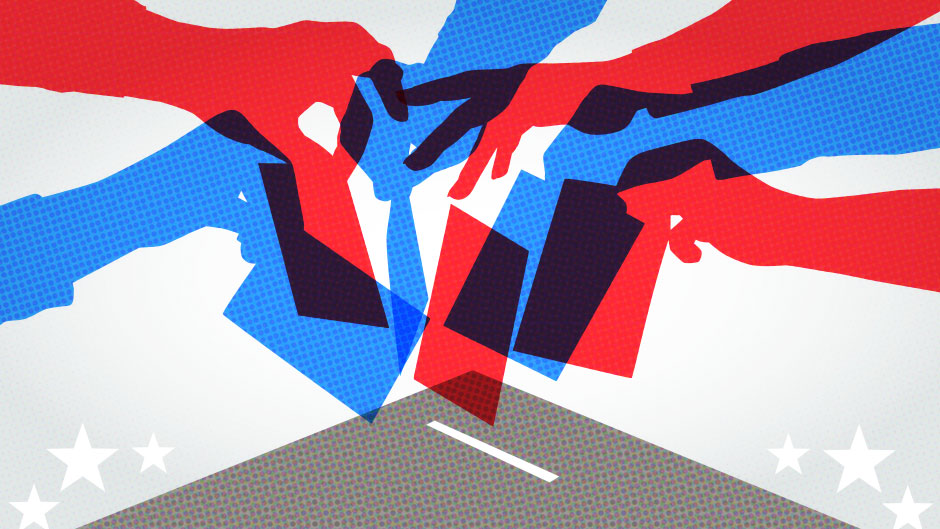National polls show that former Vice President Joe Biden is leading President Trump: Biden has a 50 percent approval rating versus 43 percent for Trump.
But can voters believe those numbers? Many remember the 2016 presidential election when Democratic candidate Hillary Clinton was favored to win, according to the polls.
Are polls reliable? “Yes,” said Casey Klofstad, professor of political science, who has spent much of his academic career studying and conducting polls. “But polls are not infallible,” he pointed out.
Polls are designed to represent the opinions of the population on a particular subject or contest. There is no way to poll everyone in a population. Instead, pollsters randomly select and survey a smaller subset . When done correctly, random sampling allows the pollster to make an accurate estimate of the opinions of the entire population. This estimate includes a margin of error, a number that represents uncertainty about the poll’s findings because of the fact that only a subset of the population was surveyed.
“There is always uncertainty in polls,” said Klofstad. “It is not a crystal ball. Always look for the margin of error when you see polling data. Reliable pollsters and media outlets will report it. Higher quality polls will have a margin of error around or below 4 percent.”
Klofstad also added that what “a person tells you today can always change.” But he believes that polls are the best tools available to learn people’s opinions and intended actions.
But what of the polls in 2016? The 2016 presidential election taught pollsters a great deal. National polls predicted a sure win for Hillary Clinton. The national vote or “popular vote” did go for Clinton, as predicted. But what elects a president is not the popular vote but the Electoral College. Despite Clintons’ national vote victory, Trump won the Electoral College and the presidency.
“Where did the polls get it wrong?” asked Klofstad. The answer is threefold.
There was not enough reliable polling done close enough to the election in a few key states such as Wisconsin, Pennsylvania, Ohio, and Florida, said Klofstad. Trump unexpectedly won in those states, defying the national predictions.
Traditionally, people with higher levels of education tend to be more engaged with politics and may be more responsive to answering polls about politics during election season. This can lead to an overrepresentation of college graduates in polls. This occurred in 2016, when the fact that many Trump supporters tended to have lower levels of education was not taken into consideration and many of these supporters were not polled.
The third factor that may have affected the 2016 election was what many called “the shy Trumpers”—voters who were voting for Trump but decided not to reveal that in polls before the election.
Klofstad believes that for this current election pollsters have learned from the lessons of 2016. More careful polling of key states will be carried out and a person’s education will be accounted for in analysis of polling data.
“The shy Trump effect is a hard nut to crack,” he said. “But if we can clean up the first two it will go a very long way to give us a more reliable result for the Electoral College.”
According to Klofstad, as election day nears, voters should rely on established sources such as Pew, Gallup, Roper, and YouGov. A site like Nate Silver’s FiveThirtyEight is also a useful reference because it grades polls according to their past record and soundness of methodology, he added.
But ultimately, polls can contribute to elections being covered like the horse races, Klofstad explained. They tell you who is up and down at a particular point in the race and focus on data public opinion rather than on the candidates themselves. Polls should never be used to determine a vote for a particular candidate, he explained. Instead, voters should listen to what candidates have to say and determine which one matches their view of what they want from a politican.
“Also, polls should not determine whether you turn out to vote,” said Klofstad. “In 2016, there may have been people who looked at polls and determined that Hillary would win handily and then decided not to vote.”

